How often do we have an ache, sit down or just stop. As I like to ask “Are you hurt or are you hurting?” Well, hospital one day Greg Paul found himself beyond hurting, advice he was hurt and needed to fix it.
Now with two new knees, he is back to climb Everest – his second attempt in three years.
The owner of Momentum Climbing Gym in Salt Lake City, Greg is an avid climber. Just last autumn he attempted the rarely climbed and difficult North Ridge of Ama Dablam.
His knee problems however became serious while he was in Nepal for his 2012 Everest expedition. He had climbed Lobuche Peak and Island Peak in addition to getting up to just below the Lhotse Face. The previous July he had climbed Alpamayo and Rainer.
His left knee has been bothering him for some time but was particularly sore on any down climbs. Being in pain most of the time, he had his right knee replaced in 2008 after experiencing similar pain climbing Rainer in 2007 and the Haute Route and the Monk in Switzerland during 2008.
He says his right knee felt pretty good after becoming “bionic” so he decided to have the left knee done replaced in November 2012. With the help of Dr Marc Mariani (who provided input in the design of the artificial knee), Greg convinced the manufacturer of the artificial knees (Ortho Development Corp or ODC of Draper, Utah) to sponsor his 2014 climb of Mt Everest.
Greg believes he will be the first person to attempt to climb Everest with two total knee replacements. I know that Ellen Miller summited both Manaslu and Lhotse with two artificial hips.
Greg’s first attempt on Everest, in 2012, was with Himalayan Experience. That climb was brought to an abrupt and controversial stop (as viewed outside the team) when Russell Brice and his Sherpas deemed the mountain too dangerous to climb due to rock fall and avalanche danger.
Lets meet Greg:
Q: So, back again? Your 2012 climb was stopped half way through due to extreme danger in the judgment of your guide. That must have been difficult. How did you handle it?
Upon learning that our expedition was over many of my team-mates just wanted to return home as soon as possible as EBC is not the most comfortable place to hang out at unless you have a purpose. Some tried to join other expeditions. I flirted with that possibility for a day but then it quickly became apparent that it was not an option for me. Observing climbers from the National Geographic/North Face Expedition (next door to us at EBC) testing their oxygen systems was the hardest thing for me. I stood there feeling sorry for myself and wishing they could use an old guy like me to contribute more data to their altitude studies. Ultimately I took solace in the fact that a decision had been made by some of the most experienced people on Everest based on events…avalanches, rock and ice fall, injuries and death….that I personally witnessed. Finally, Russell Brice took pity on me and another climber, Hector Sanchez, knowing that both of us were just not ready to go home and arranged for us to climb Island Peak. That was an incredibly joyful and cathartic experience.
Q: Is there a singular lesson you learned from that experience you will take with you this year?
Disappointment is an inherent element of mountaineering. The disappointment of not summiting does not have to negate the joy of the journey.
Q: You attempted the rarely climbed Ama Dablam North Ridge last autumn spring with Himex. How was it?
(1)Disappointing :)….rare cyclone spawned snow storm dumped 3 meters of snow throughout the Khumbu region making climbing anywhere slow and treacherous.
(2) One of the most incredible adventures that I have had. Ama Dablam is among the most beautiful mountains in the world and the North Ridge is a stunning route. We had a three person expedition and enjoyed getting to know one another, getting to know the Sherpas and our guides. In addition it was a real to see Russell Brice’s excitement in returning to one of his first Himalayan climbs. He was like a kid in a candy store as he sped by us on his “memory lane” ascent to Russell’s Roost or Camp 1. The North Ridge is a serious route right from the start. Even though we were not able to summit the excitement of climbing just part of the route made it all worth it. We had base camp and the route to ourselves which is quite unique compared to other popular Himalayan mountains.
Q: Ok, you have had both knees replaced and you are still climbing big mountains. What’s up with that?
I was a rambunctious skier who loved skiing bumps and doing jumps. I should have throttled it back as I got older but I couldn’t resist showing my teenage kids that their “old man” still had it in him. All those bumps and missed-jumps finally made a mess of my knees. I tried most of the non-surgical procedures to alleviate the pain in my knees but the relief was only temporary. Eventually it came down to choice between curtailing my favorite outdoor activities or have total knee replacement. At 54 I had my right knee replaced. It made a huge difference. Four years later and several months after my 2012 Everest attempt and a successful Alpamayo climb I knew that it was time to get my left knee replaced. I have talked to a lot of people who have stopped doing the things they enjoy because of bad knees but do not want to get them replaced until they are older. I guess I am the poster child for getting them replaced sooner than later so you don’t have to stop doing what you enjoy.
Q: Do you have to do anything differently with respect to to training with the new knees?
After both knee replacement surgeries I was very diligent in my rehabilitation. Sometimes even a little over zealous. Since I live in Utah and I am close to the mountains I have incorporated the local “resources” into my training. Hiking, rock climbing, skiing and mountain biking are more enjoyable forms of training. I have to work really hard to build and maintain muscle mass in my legs. While in Nepal this past October/November Russell Brice (in his friendly but direct manner) pointed out my less than graceful manner of descending. I have tried to emphasize “down-climbing” in my training in order to strengthen the stabilizer muscles around my knees to improve my speed and agility on descents. I will not lie…it has been difficult to get up early in the morning to climb a couple of thousand feet or work out in the gym. but a hard climb requires hard work.
Q: Are you trying to send a message to the rest of us? 🙂
I don’t have to send you a message:). I did not know about or follow your website prior to my 2012 attempt. Since then you have been an inspiration as will as a great resource in my preparation for this second attempt of Everest. In 1997, while trying to convince me to join a “Climbers for Peace” Mt Elbrus expedition, the organizer, Fred Ptucha, reminded me: “don’t get so busy making a living that you forget to make a life” (Dolly Parton). I want to inspire my kids and my posterity of the importance of doing hard things and pursuing adventure in their life. Also, given what I have gone through with my knees, I want to inspire people to not let their handicaps get in the way of their enjoyment of life or pursuit of dreams. We are blessed in this time and age with increasing technological advances that if taken advantage of can enable us to realize dreams that we might have otherwise given up on.
Q: You are going with Russell Brice, Himex. Why did you select Russ?
I have gotten to know Russell and his staff pretty well after two expeditions. I believe he and his team’s extensive experience in the Everest region of the Himalayas helps Russell to see, feel and anticipate things that less experience operators cannot. During last October’s Ama Dablam expedition I felt less like a “deer in the headlights” compared to how I felt on my first Himalayan (Everest) expedition and I was able to observe and appreciate Russell’s care and respect for his Sherpa team and the Sherpa people in general. I believe the feeling is mutual. They are like family and a family looks out for one another. That dynamic can be key to success or failure, life or death on Everest. One other thing. My wife really appreciated the fact that Russell was more concerned with our lives than his reputation in 2012. That alone determined that I would be going back to Everest with HIMEX. In fact, my wife and my 14 year old son will join me for the trek to EBC.
Q: Anything else you want to add?
I wish everyone a successful and safe season on Everest. Onward and upward!
Greg, you are certainly an inspiration for all aging baby boomers and anyone who thinks aches and pains are the end of their world. Best of luck. Greg will be climbing from the South side (Nepal) with Himalayan Experience. You can follow him on his Blog and Facebook page.
Climb On!

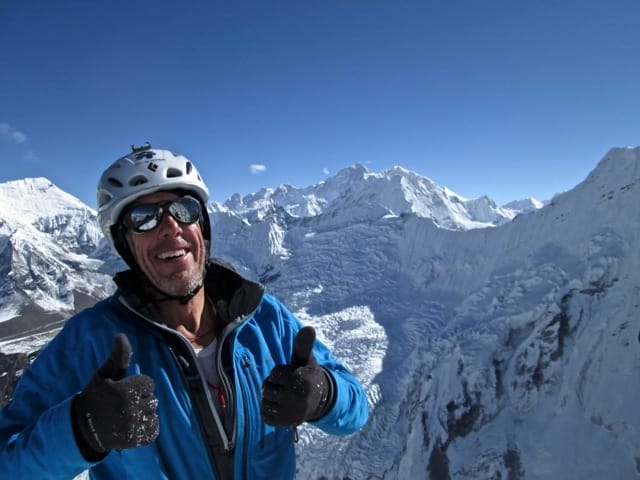
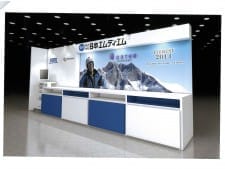
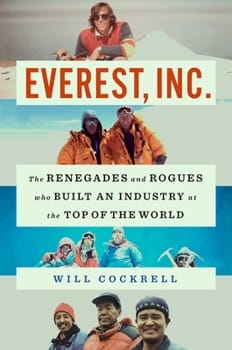
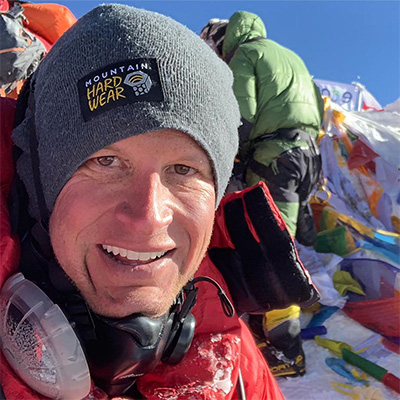
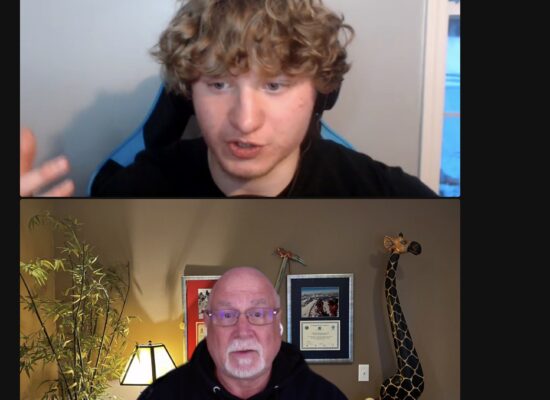
3 thoughts on “Everest 2014: Interview with Greg Paul and his New Knees”
Finally! I’ve been looking for an example of a climber still doing it after knee replacements. Thank you so much for this interview Allan. You don’t know how inspiring and hopeful it is. I was almost resigned to knee replacement this year at age 60. But I was having a hard time finding anyone that had done it and resumed a climbing passion. For the last six months I’ve tried prolotherapy knee injections along with a change in lifestyle diet. My knees are 100 percent better and I’m now not thinking of knee replacement yet. This summer will tell whether I can train hard enough for another Mt. Rainier attempt or not. Can’t wait. Thanks again for the great interview.
There is hope for me! Thanks for an inspiring article..
I loved this quote from Greg: “Disappointment is an inherent element of mountaineering. The disappointment of not summiting does not have to negate the joy of the journey.” As in mountaineering, so in life. Thanks for another inspired interview.
Comments are closed.